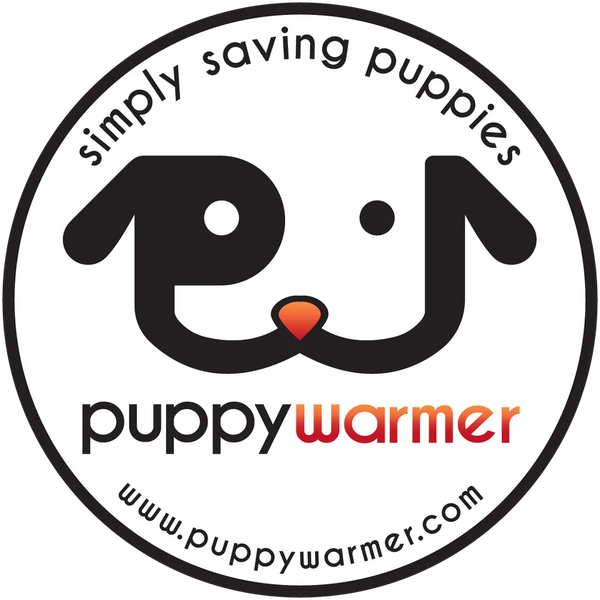Humidity and the Health of Newborn Puppies: What Every Breeder Should Know
Share
As winter approaches, many breeders and rescues notice a troubling trend: saving and keeping newborn puppies healthy becomes more challenging in colder months. One often-overlooked factor is humidity in the whelping area.
Low humidity can quickly turn a healthy start into a critical challenge. At Puppywarmer, we’ve helped thousands of breeders, rescues, and veterinarians understand how environmental conditions directly impact neonatal puppy survival. This article will help you recognize the risks of low humidity, prevent problems before they start, and create the right environment for your litters to thrive.
Why Humidity Matters in Neonatal Puppy Care
The ideal humidity range for puppies is 40–60%. Most newborn puppies will thrive in this range, while dehydrated puppies may benefit from slightly higher levels (55–70%)—always in consultation with a veterinarian.
But when humidity drops below 30%—as it often does during winter in northern climates or in naturally arid regions—newborn puppies face serious risks:
-
Dehydration: Puppies breathe an average of 20 times per minute—nearly 29,000 breaths per day. In a dry room, each breath of dry air is a micro-dehydration event, gradually pulling vital moisture out of their bodies faster than it can be replaced.
-
Respiratory Vulnerability: A puppy’s airways and lungs function best when moist. In dry air, they are more prone to infections from viruses and bacteria.
Signs of dehydration in newborn puppies include:
-
Tented skin that is slow to return when gently lifted
-
Darker yellow, orange, or brown urine
-
Sticky, tacky gums instead of moist gums
While dry or flaky skin may also be noticeable, the real dangers are internal dehydration and respiratory stress—silent threats that can escalate quickly.
Prevention Beats Emergency Care
At Puppywarmer, we often say: “The room is part of the system.”
Creating the right environment starts outside the incubator.
The Role of the Microenvironment
An incubator or warmed whelping box provides a microenvironment—a controlled space distinguished by temperature, humidity, oxygen, protection, and light. But this microenvironment depends on the larger environment of the room.
For example, Puppywarmer’s 18×18 Incubator has a volume of 3.375 cubic feet. By comparison, a 12×12×8 room has 341 times that volume. If the room’s humidity is only 20%, the incubator cannot maintain proper humidity levels on its own. The dry room air will continuously draw moisture out, leading to problems like chilling or excessive condensation.
This makes room humidity the root cause—and the first issue to correct.

The above photo shows an example of a large ultrasonic room humidifier. These humidifiers could hold 16 liters (about 4 gallons) of water. This humidifier is a good choice for larger rooms and very dry houses. Smaller room ultrasonic humidifiers hold 6-7 liters (less than two gallons). While often effective, they require more frequent refilling. You want an ultrasonic room humidifier that allows you to select the target room humidity. Correcting room humidity with an ultrasonic room humidifier is good for the health of the puppies inside and outside of the incubator, the mother dog, and the humans who spend time in the room.
How to Correct Room Humidity for Puppies
Fortunately, correcting humidity doesn’t require expensive or specialized equipment. Ultrasonic room humidifiers are affordable, widely available, and effective. Unlike older evaporative humidifiers that rely on wicking materials (which can harbor bacteria), ultrasonic models release a fine, clean mist into the air.
Recommended brands include Levoit, Holmes, and Elechomes, with models available on Amazon, Home Depot, Lowe’s, and other retailers.
Tips for Choosing a Humidifier:
-
Select a unit rated for your room size
-
Opt for models with humidity settings (so you can maintain 35–45%)
-
Skip the “warm mist” feature—it’s unnecessary
-
When in doubt, choose the next size up for better performance
-
Expect to spend $125–$150 depending on room size and capacity
The Benefits of Proper Humidity
Correcting room humidity to around 35–45% provides measurable benefits:
-
For at-risk puppies: Incubators maintain proper humidity and temperature more effectively
-
For healthy puppies: Stronger resistance to dehydration and respiratory illness
-
For mother dogs: Greater comfort and reduced risk of illness during nursing
-
For breeders and families: Improved air quality and lower risk of respiratory infections
In short: what’s good for the puppies is also good for the people and dogs caring for them.
Puppywarmer’s Commitment to Education
At Puppywarmer, we don’t just provide state-of-the-art incubators—we share knowledge that saves lives. While we don’t sell humidifiers, we believe every breeder should understand how room conditions directly impact neonatal puppy survival.
By planning ahead this winter and creating the right humidity levels, you’ll give your litter the strongest possible start. As we like to remind breeders:
👉 Planners save puppies.
A Community Focused on Saving Puppies
This guide was developed by Ken Sunden, founder of Puppywarmer, with insights from breeders, rescues, and veterinarians who share one mission: saving at-risk puppies during their first weeks of life.
By combining veterinary care with the right tools and knowledge, breeders can give vulnerable puppies a fighting chance.
👉 Puppywarmer incubators, oxygen concentrators, and handheld nebulizers are designed to create the safest, most effective environment for neonatal recovery.
